Abstract
Raw, unprocessed coconut supports the growth of salmonellae as well as that of other enteric bacteria, salmonellae being particularly resistant to subsequent desiccation. Original contamination is not due to carriers or to polluted water supplies, but to contact with bacteria-containing soils followed by dispersion via infected coconut milk and shells. Pasteurization of raw coconut meat in a water bath at 80 C for 8 to 10 min effectively killed such bacteria, did not injure the product, and provided a prophylactic method now widely used by the coconut industry.
Full text
PDF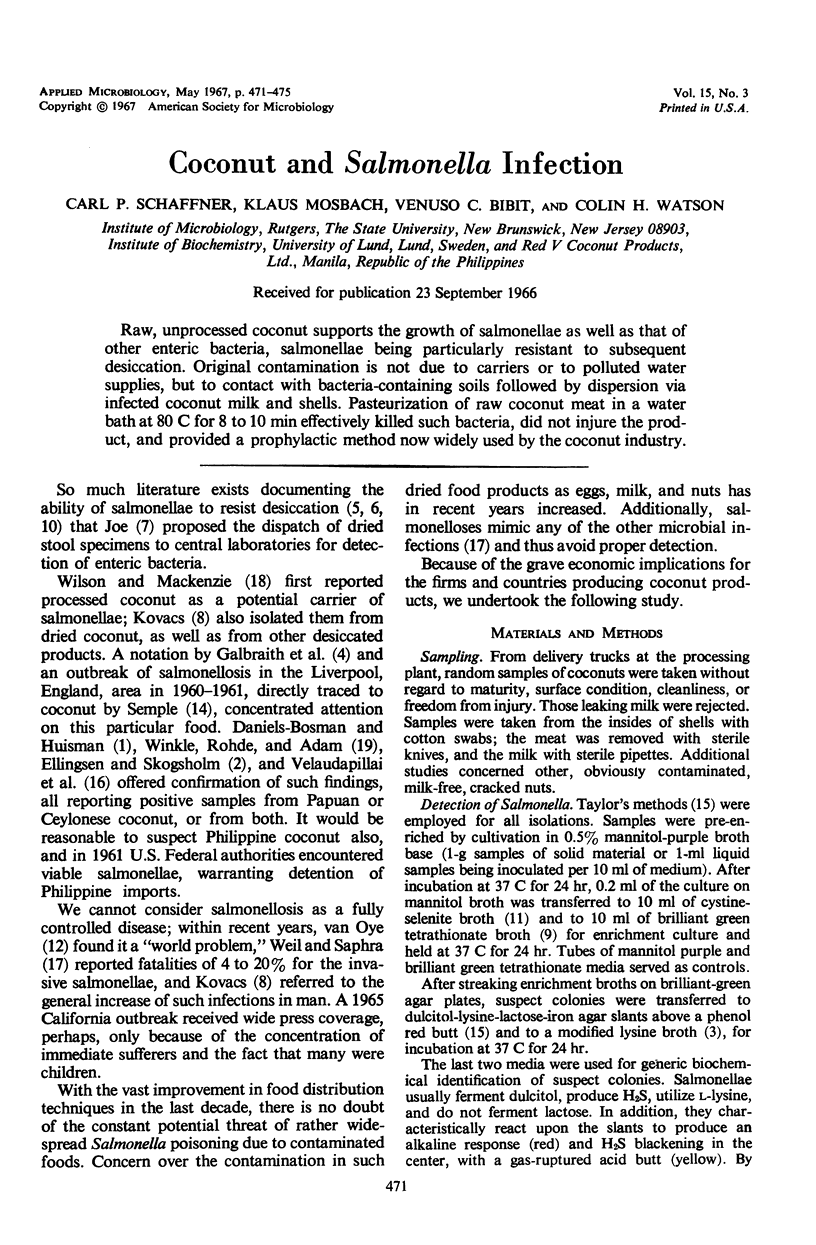
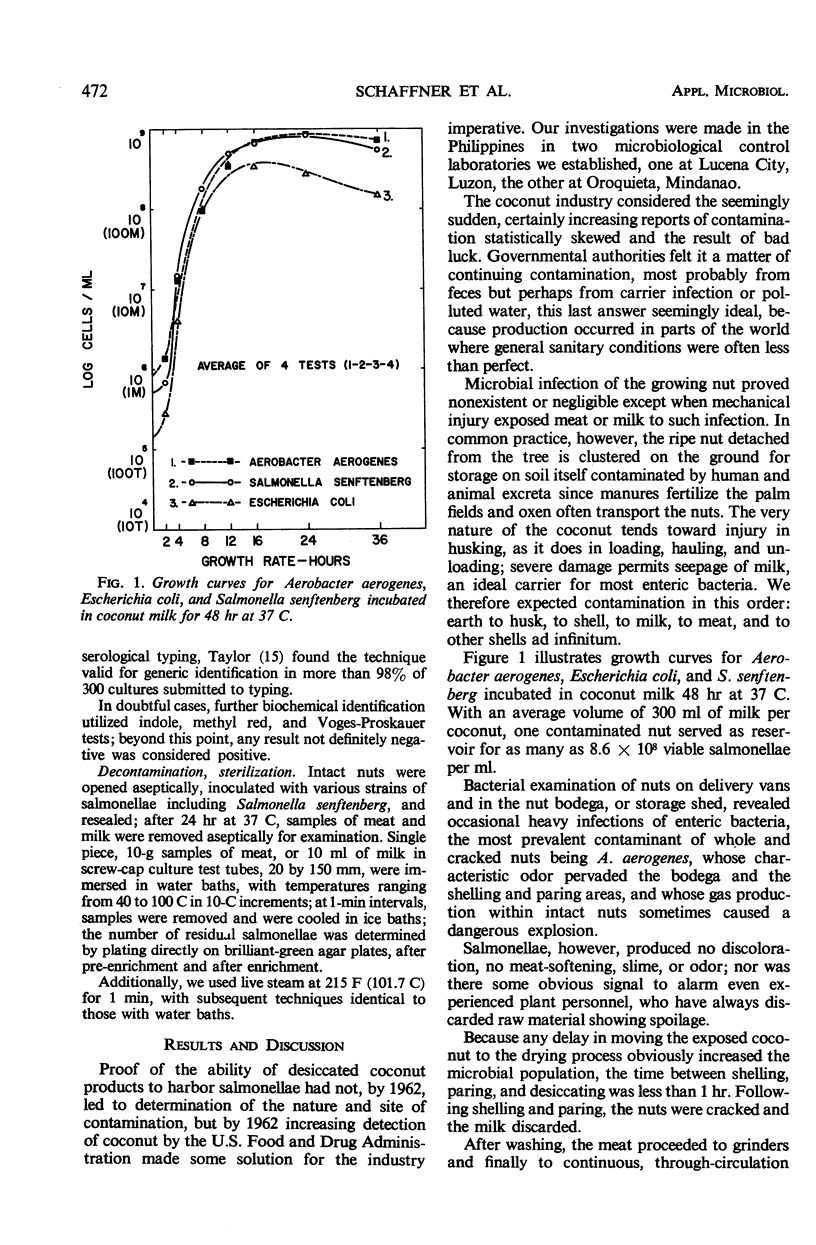
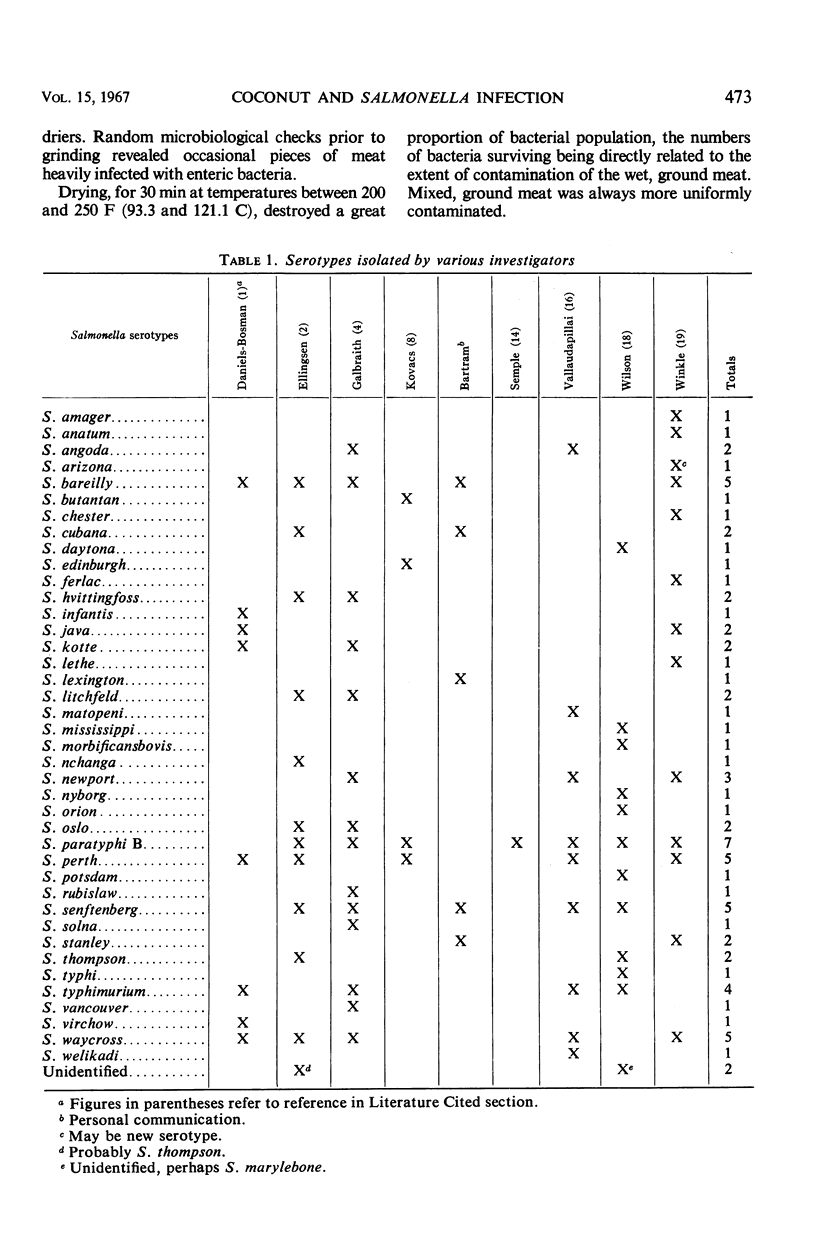
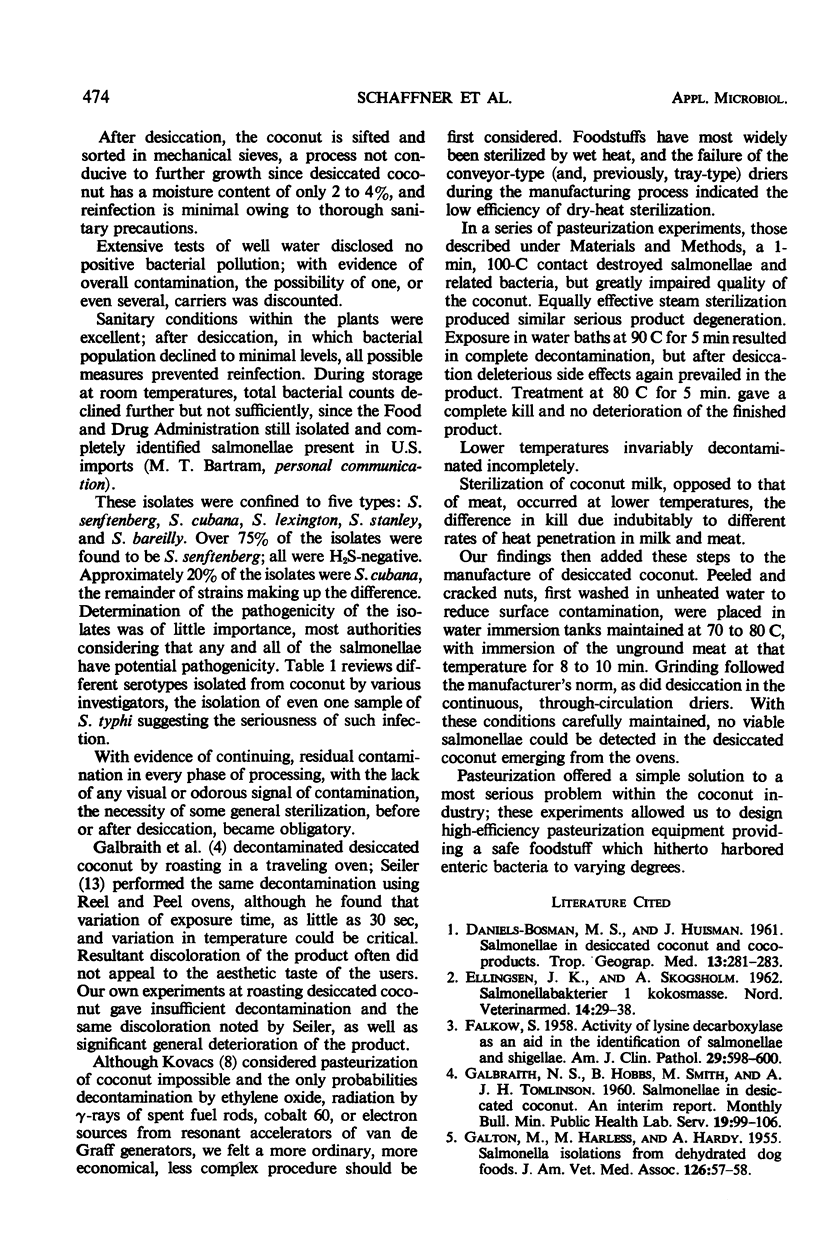
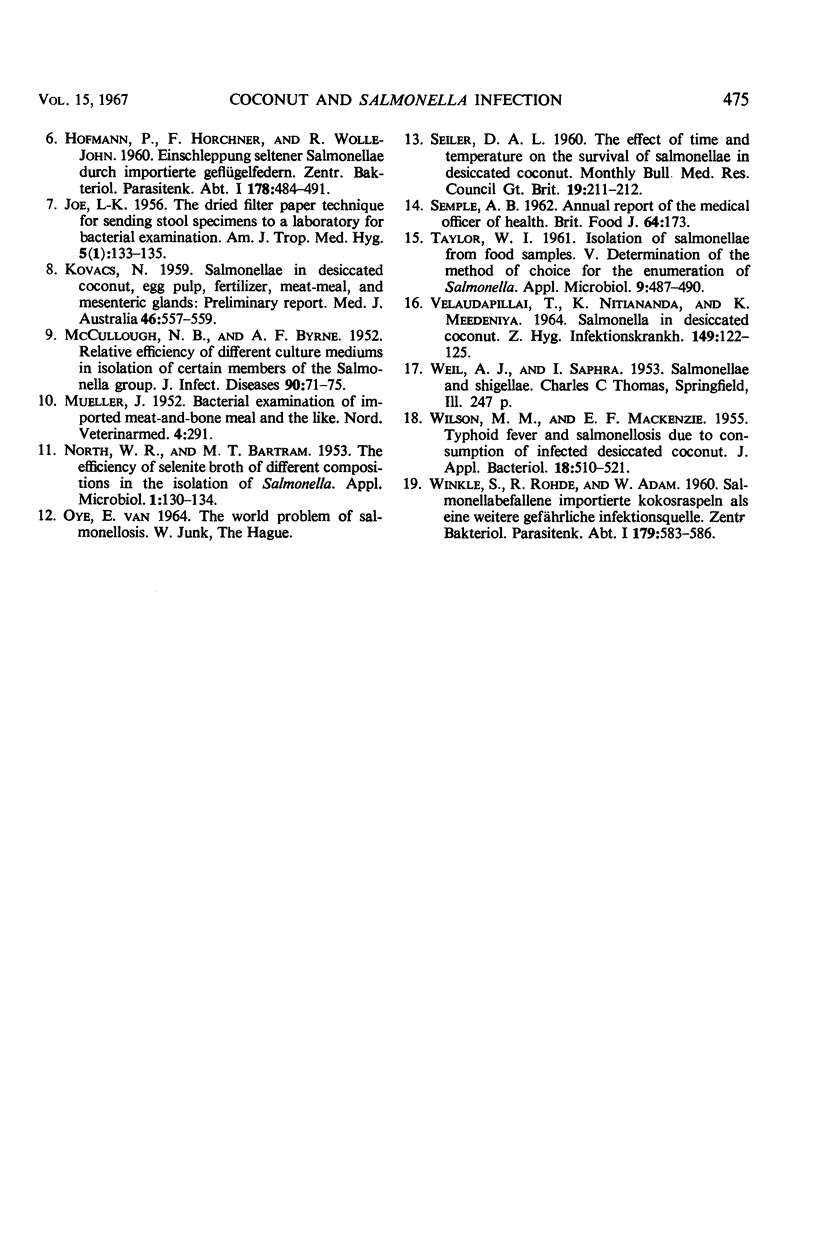
Selected References
These references are in PubMed. This may not be the complete list of references from this article.
- DANIELS-BOSMAN M. S., HUISMAN J. Salmonellae in desiccated coconut and coco-products. Trop Geogr Med. 1961 Sep;13:281–283. [PubMed] [Google Scholar]
- FALKOW S. Activity of lysine decarboxlase as an aid in the identification of Salmonellae and Shigellae. Am J Clin Pathol. 1958 Jun;29(6):598–600. doi: 10.1093/ajcp/29.6_ts.598. [DOI] [PubMed] [Google Scholar]
- GALBRAITH N. S., HOBBS B. C., SMITH M. E., TOMLINSON A. J. Salmonellae in desiccated coconut. An interim report. Mon Bull Minist Health Public Health Lab Serv. 1960 Jun;19:99–106. [PubMed] [Google Scholar]
- GALTON M. M., HARLESS M., HARDY A. V. Salmonella isolations from dehydrated dog meals. J Am Vet Med Assoc. 1955 Jan;126(934):57–58. [PubMed] [Google Scholar]
- JOE L. K. The dried filter paper technique for sending stool specimens to a laboratory for bacteriologic examination. Am J Trop Med Hyg. 1956 Jan;5(1):133–135. doi: 10.4269/ajtmh.1956.5.133. [DOI] [PubMed] [Google Scholar]
- KOVACS N. Salmonellae in desiccated coconut, egg pulp, fertilizer, meat-meal and mesenteric glands: preliminary report. Med J Aust. 1959 Apr 25;46(17):557–559. [PubMed] [Google Scholar]
- McCULLOUGH N. B., BYRNE A. F. Relative efficiency of different culture mediums in isolation of certain members of the Salmonella group. J Infect Dis. 1952 Jan-Feb;90(1):71–75. doi: 10.1093/infdis/90.1.71. [DOI] [PubMed] [Google Scholar]
- NORTH W. R., BARTRAM M. T. The efficiency of selenite broth of different compositions in the isolation of Salmonella. Appl Microbiol. 1953 May;1(3):130–134. doi: 10.1128/am.1.3.130-134.1953. [DOI] [PMC free article] [PubMed] [Google Scholar]
- SEILER D. A. The effect of time and temperature on the survival of Salmonellae in desiccated coconut. Mon Bull Minist Health Public Health Lab Serv. 1960 Nov;19:211–212. [PubMed] [Google Scholar]
- TAYLOR W. I. Isolation of Salmonellae from food samples. V. Determination of the method of choice for enumeration of Salmonella. Appl Microbiol. 1961 Nov;9:487–490. doi: 10.1128/am.9.6.487-490.1961. [DOI] [PMC free article] [PubMed] [Google Scholar]
- VELAUDAPILLAI T., NITIANANDA K., MEEDENIYA K. SALMONELLA IN DESICCATED COCONUT. Z Hyg Infektionskr. 1963 Apr 22;149:122–125. doi: 10.1007/BF02157511. [DOI] [PubMed] [Google Scholar]


